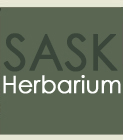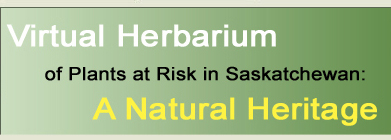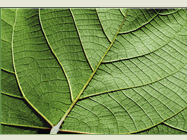|
| Polygonum viviparum
L. |
|
| |
| TAXONOMY |
| |
| Family: |
Polygonaceae |
| Genus: |
Polygonum |
| |
| Species Synonyms: |
Bistorta vivipara (L.) S.F. Gray
Polygonum fugax Small
Polygonum macounii Small ex
Macoun
Polygonum viviparum var. alpinum Wahlenb.
Polygonum viviparum var. macounii (Small ex Macoun) Hultén |
| Common Names: |
alpine bistort |
| |
| DISTRIBUTION |
| |
| Canada: |
Yukon – Mackenzie – Arctic Island
– Labrador, south to southern British Columbia – Alberta –
northern and east-central Saskatchewan – northern Manitoba –
northern Ontario – Ungava – eastern Quebec – Newfoundland,
isolated at Lake Superior north shore |
| Saskatchewan: |
northern to central Saskatchewan; Clearwater River
– Hasbala Lake – Candle Lake – Pasquia Hills |
| Ecoregion: |
Mid-Boreal Upland, Mid-Boreal Lowland, Selwyn
Lake Upland |
| |
| HABITAT |
| |
| Saskatchewan: |
pond margins, marshy shores,
depressions in treed bogs and fens, and shrubby tundra meadows |
| Associated species: |
black spruce, bog birch, bog
blueberry, shrubby cinquefoil, tamarack, water sedge |
| |
| RARITY STATUS |
| |
Provincial
Status According
to Harms (2003): |
Threatened |
| Nature Conservancy
Status: |
G5 S1S2 |
Saskatchewan
Species at
Risk Status: |
None |
| COSEWIC Status:
|
None |
| |
| Alpine bistort is
threatened because it is rare or uncommon in Saskatchewan. It is only somewhat
regionally restricted most local populations are small. No immediate threats
are known but may occur in the future. |
| |
| SPECIES
DESCRIPTION |
| |
| Height: |
8 – 30 cm |
| Roots: |
roots fibrous; rhizomes short, sometimes twisted,
scaly |
| Stems: |
solitary to 2, erect, simple, hairless |
| Leaves: |
mostly basal, stem leaves 2 – 4; leaf stalk
attached to sheath, unwinged distally, 5 – 100 mm long; blade 1 –
8 cm long, 5 – 15 mm long, linear to lance-shaped, base wedge-shaped
to heart-shaped, hairy on lower surface, bluish on upper surface, margin
entire and usually rolled under; fused stipules open down one side, brown,
dry and membranous |
| Inflorescence: |
unbranched, solitary, terminal, 2 – 9 cm
long, 4 – 10 mm wide, spike-like, dense, usually with pink to brown
bulblets; inflorescence stalk 1 – 5 cm long |
| Flowers: |
tepals 2 – 4 mm long, greenish proximally,
white or pink distally; stamens included or exserted, some may be poorly
developed, anthers reddish to purple |
| Fruits: |
fruits rarely produced, dark brown, dull |
| |
| POLYGONUM
KEY FOR SPECIES FOUND IN SASKATCHEWAN |
| |
| 1 Flowers solitary or in small axillary
clusters; leaves jointed at the base with the stalk, small; outer tepals
may be boat-shaped; fused stipules often dry and membranous, 2-lobed |
2 |
| 1 Flowers in spike-like clusters;
leaves not jointed at the base with the stalk, large; outer tepals may be
winged or unwinged, but not boat-shaped (except in P. cilinode and P. convolvulus);
fused stipules papery |
9 |
| |
|
2 Inflorescence compact
|
3 |
| 2 Inflorescence a slender, open, unbranched |
5 |
| |
|
| 3 Fruits black, smooth and shiny;
tepals rounded |
P. spergulariiforme |
| 3 Fruits yellowish to dark brown,
not shiny; tepals pointed |
4 |
| |
|
| 4 Bracts definitely white-margined;
stems to 20 cm tall |
P. polygaloides var. confertiflorum |
| 4 Bracts only slightly white-margined,
if at all; stems less than 20 cm |
P. polygaloides var. kelloggii |
| |
|
| 5 Flowers on reflexed stalks |
P. douglasii ssp. douglasii |
| 5 Flowers ascending or spreading |
6 |
| |
|
| 6 Fruits shiny; leaves linear to lance-shaped |
P. ramosissimum |
| 6 Fruits dull; leaves oval |
7 |
| |
|
| 7 Tepals bottle-shaped, outer tepal
hooded |
P. achoreum |
| 7 Tepals not constricted below the
tip, outer tepal not hooded |
8 |
| |
|
| 8 Leaves on the branches the same
size as the ones attached directly to the stem; sepals with greenish-white
or pink margins |
P. arenastrum (= P. aviculare
ssp. depressum) |
| 8 Leaves on the branches much smaller
than the ones attached directly to the stem; sepals with white, pink or
purple margins |
P. aviculare |
| |
|
| 9 Stems slender and twining; leaves
broad, base arrow-shaped |
10 |
| 9 Stems not twining; leaves linear
to lance-shaped, base not arrow-shaped |
12 |
| |
|
| 10 Fused stipules with a ring of bristles |
P. cilinode (= Fallopia cilinodes) |
| 10 Fused stipules lacking bristles |
11 |
| |
|
| 11 Fruiting sepals to 5 mm long, wings
small; plants annual |
P. convolvulus var. convolvulus
(= Fallopia convolvulus) |
| 11 Fruiting sepals to 1.5 cm long,
wings broad; plants perennial |
P. scandens var. scandens (= Fallopia
scandens) |
| |
|
| 12 Leaves mainly basal, stem leaves
few and reduced |
P. viviparum (= Bistorta vivipara) |
| 12 Leaves mainly on the stem, well-developed |
13 |
| |
|
| 13 Fused stipules with bristles at
the summit |
14 |
| 13 Fused stipules without bristles |
15 |
| |
|
| 14 Rhizomes forking; perennials; fused
stipules expanded at the top to create a rim; spikes to 2 cm thick; tepals
not glandular |
P. amphibium var. stipulaceum
(= Persicaria amphibia) |
| 14 Roots fibrous; fused stipules not
expanded at the top; spikes slender, less than 2 cm thick; tepals glandular |
P. punctatum var. confertiflorum
(= Persicaria punctata) |
| |
|
| 15 Annuals, terrestrial; roots fibrous;
spikes terminal and axillary, numerous |
P. lapathifolium var. lapathifolium
(= Persicaria lapathifolia) |
| 15 Perennials, often aquatic; rhizomes
forking; spikes terminal, solitary or paired |
16 |
| |
|
| 16 Leaf stalks attached near base
of fused stipules; leaves and upper stems hairless to sparsely straight-hairy |
P. coccineum var. coccineum
(= Persicaria amphibia) |
| 16 Leaf stalks attached midway on
fused stipules; leaves and upper stems densely ashy-gray hairy |
P. coccineum var. pratincola
(= Persicaria amphibia) |
|






